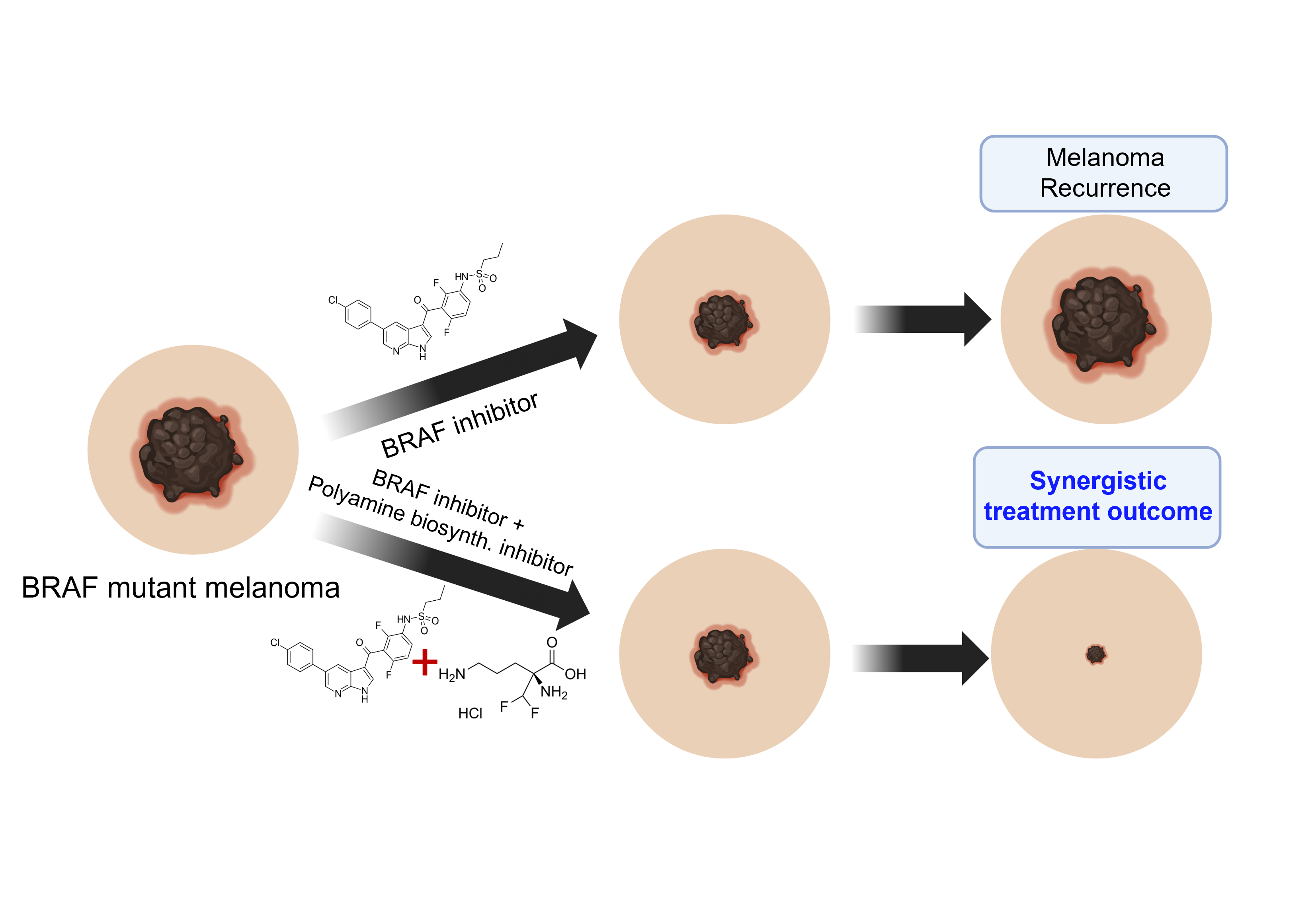A research team led by Dr. Tackhoon Kim at the Center for Medicinal Materials Research at the Korea Institute of Science and Technology (KIST, President Sang-Rok Oh) has identified a new key mechanism behind the resistance of melanoma to BRAF inhibitors and has proposed a strategy to develop new anticancer therapies to overcome this resistance.
The research team used melanoma cell line models resistant to BRAF inhibitors and discovered that the activation of the AMD1 gene plays a crucial role in the development of drug resistance. The AMD1 gene is essential for polyamine biosynthesis, which promotes cell growth and proliferation. It was found that polyamine levels are generally higher in BRAF inhibitor resistant cancer cells. Through experiments, the team confirmed that inhibiting polyamine biosynthesis lowers resistance to BRAF inhibitors, leading to melanoma cell death.
Furthermore, the study revealed that the oncogene c-Myc triggers the increase of polyamine biosynthesis in BRAF-resistant melanoma. This increase in polyamines enhances mitochondrial protein levels, boosting mitochondrial activity and contributing to the proliferation of cancer cells resistant to treatment. The researchers identified this process as the core mechanism driving BRAF inhibitor resistance in melanoma. This is the first study in the world to pinpoint polyamine biosynthesis as a cause of BRAF inhibitor resistance. The KIST team also suggested an anticancer drug development strategy to block each stage of the resistance mechanism.
This research opens the door to developing new anticancer therapies based on regulating polyamine metabolism, which could be used to treat melanoma, a cancer that has been difficult to cure due to frequent drug resistance. The team expects to secure leading technology applicable to the BRAF inhibitor market, which is projected to reach $1 billion by 2028.
Dr. Kim of KIST stated, “We have identified the key mechanism behind drug resistance in melanoma, the deadliest form of skin cancer. We plan to verify the anticancer effects of polyamine metabolism regulation in other cancers frequently associated with BRAF mutations, such as colorectal and thyroid cancers, as part of our drug development efforts.”
###
KIST was established in 1966 as the first government-funded research institute in Korea. KIST now strives to solve national and social challenges and secure growth engines through leading and innovative research. For more information, please visit KIST’s website at https://eng.kist.re.kr/
This research was supported by the Ministry of Science and ICT (Minister Sang Im Yoo), through KIST’s major projects, the Mid-career Researcher Support Program, the Biomedical Technology Development Program, the Convergence Research Program, and the National Research Council of Science and Technology (NST). The findings were published in the latest issue of the international journal Molecular Cancer (IF 27.7, top 1.1% in JCR rankings).


